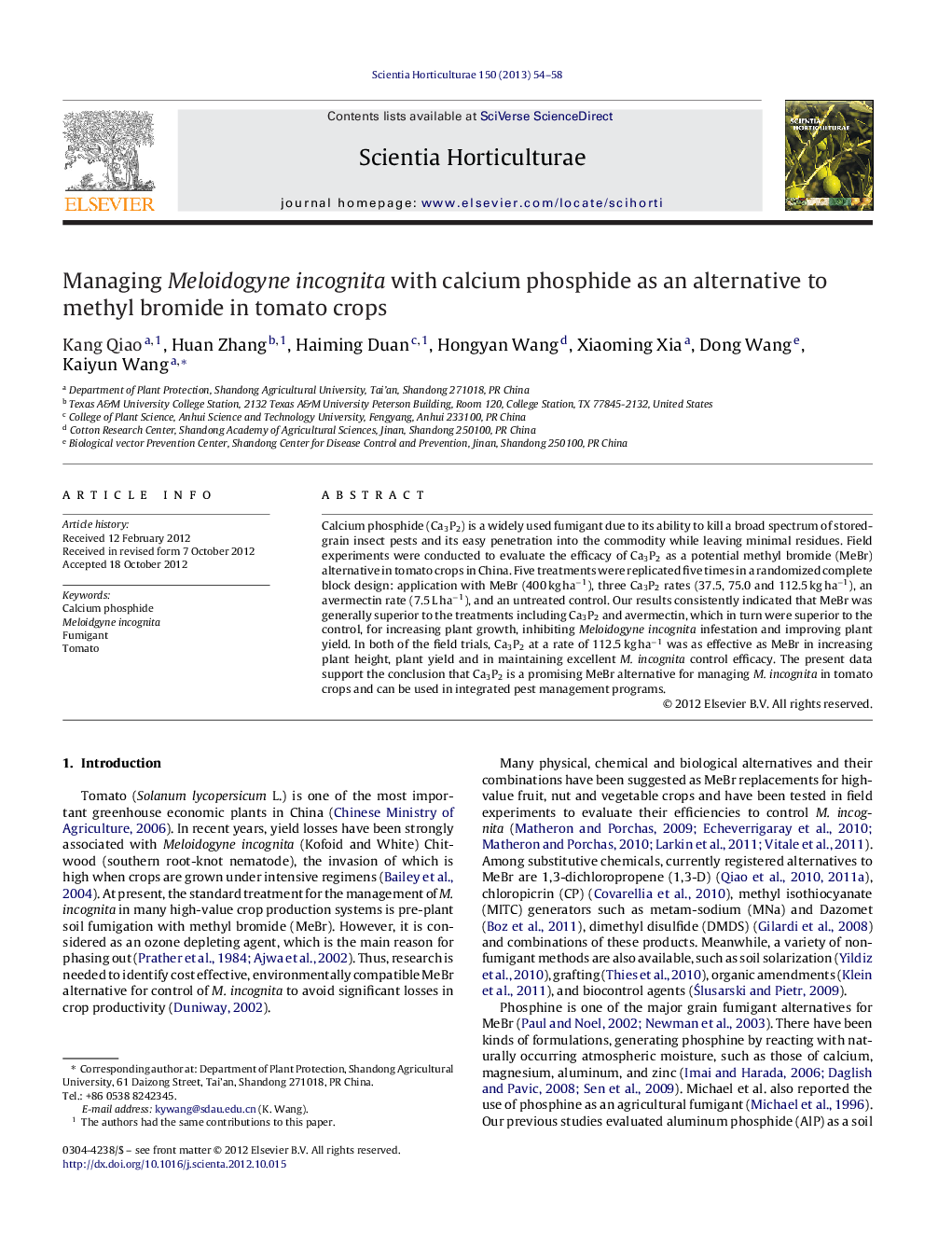| کد مقاله | کد نشریه | سال انتشار | مقاله انگلیسی | نسخه تمام متن |
|---|---|---|---|---|
| 4567251 | 1628848 | 2013 | 5 صفحه PDF | دانلود رایگان |

Calcium phosphide (Ca3P2) is a widely used fumigant due to its ability to kill a broad spectrum of stored-grain insect pests and its easy penetration into the commodity while leaving minimal residues. Field experiments were conducted to evaluate the efficacy of Ca3P2 as a potential methyl bromide (MeBr) alternative in tomato crops in China. Five treatments were replicated five times in a randomized complete block design: application with MeBr (400 kg ha−1), three Ca3P2 rates (37.5, 75.0 and 112.5 kg ha−1), an avermectin rate (7.5 L ha−1), and an untreated control. Our results consistently indicated that MeBr was generally superior to the treatments including Ca3P2 and avermectin, which in turn were superior to the control, for increasing plant growth, inhibiting Meloidogyne incognita infestation and improving plant yield. In both of the field trials, Ca3P2 at a rate of 112.5 kg ha−1 was as effective as MeBr in increasing plant height, plant yield and in maintaining excellent M. incognita control efficacy. The present data support the conclusion that Ca3P2 is a promising MeBr alternative for managing M. incognita in tomato crops and can be used in integrated pest management programs.
► Our study finds a new use for calcium phosphide, which may be possible to extend the product's life cycle.
► Our results provide some practical information for evaluating application prospects of calcium phosphide in China.
► Our study adds significant information from trials in China, thus providing literature that is lacking from this country.
Journal: Scientia Horticulturae - Volume 150, 4 February 2013, Pages 54–58